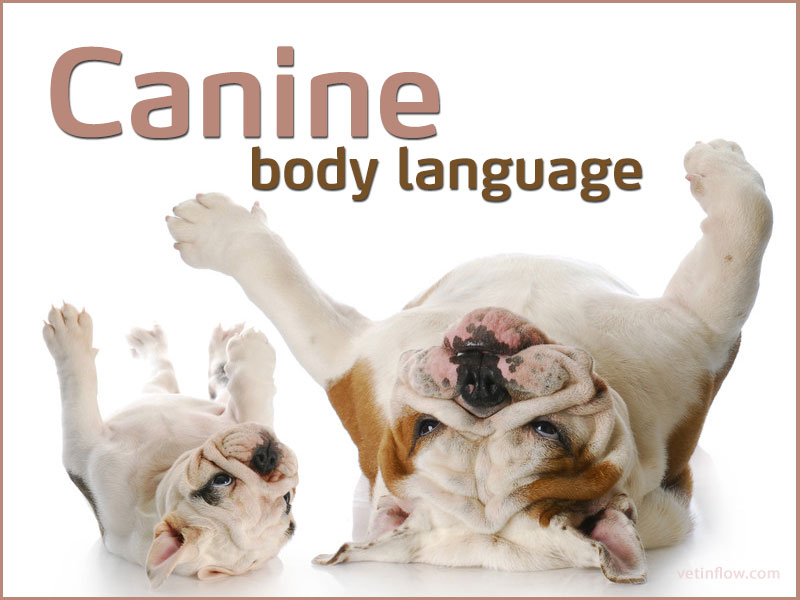
Canine body language

Dogs communicate with each other and with humans through vocalisation and through body language. It is very important for us to have a basic understanding of canine behaviour and canine body language, in order to avoid any miscommunications that may lead to less positive interactions. Knowing how to "read" our dogs will also allow us to better understand their feelings and predict future behaviours.
The best way to assess how a dog is feeling is to look carefully at his or her ears, eyes, mouth, tail and overall body posture.
Relaxed dogs will usually look around casually, hold their tail loosely in its normal position, hold their ears back a little bit and show a relaxed body, with no tense muscles. Friendly and playful dogs will look at ease, wag their tails and their eyes will be wide open and alert. If they are trying to play with you they will probably bark, run and jump around excitedly, often displaying a play bow.
Fearful dogs usually tuck their tail between their legs, keep their head low and ears flattened, while avoiding eye contact. They may also tremble, shiver, urinate and even show their teeth. Submissive dogs typically place their tail between their legs and roll onto their side or to their back to expose their belly.
Dogs showing aggressive behaviour will challenge each other by staring directly at one another and show their teeth while growling, snarling or barking loudly. Their ears are usually close to their head and their bodies will be tense with hackles raised on their back. These dogs will easily snap and bite.
All dogs have different personalities and they don't always show how they're feeling in the same way. When you are trying to understand a dog's emotional state you should consider the dog's individual behaviour, body language and the surrounding context.
Would you like to know more about dogs? Check our Canine Courses:
Canine courses
Read the previous article: Why do horses grind their teeth?

